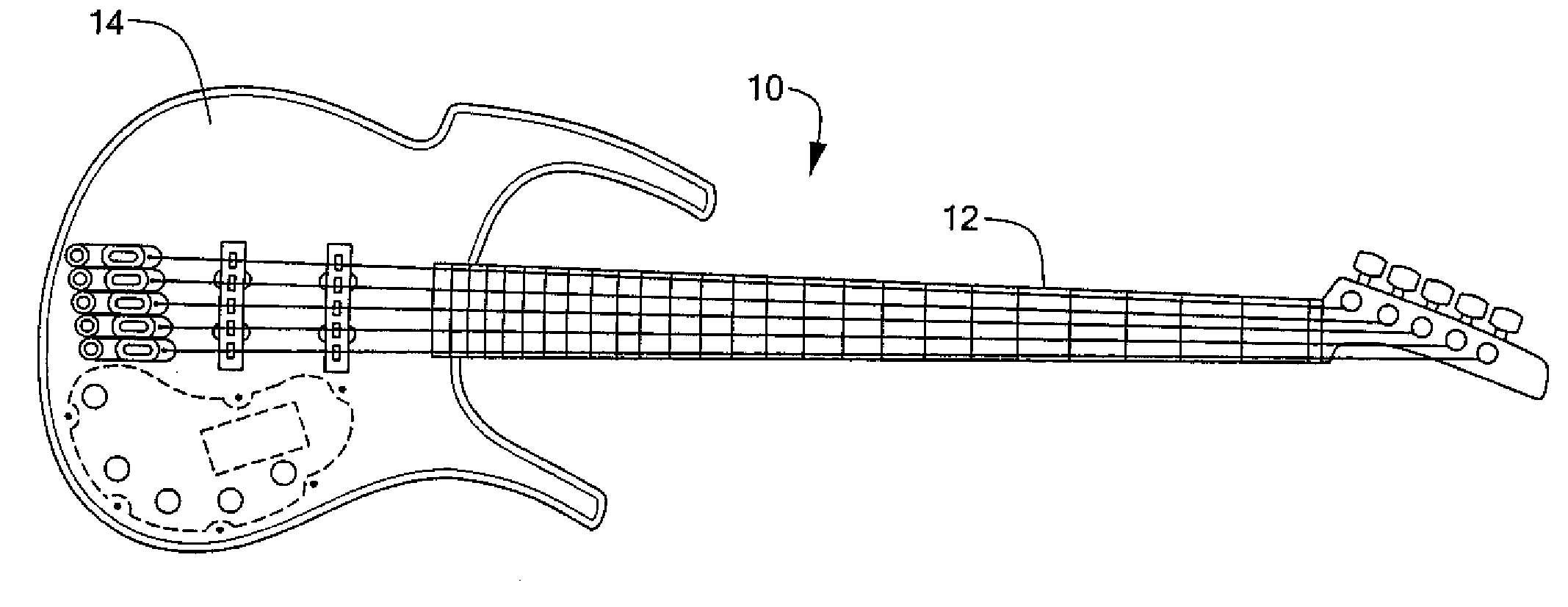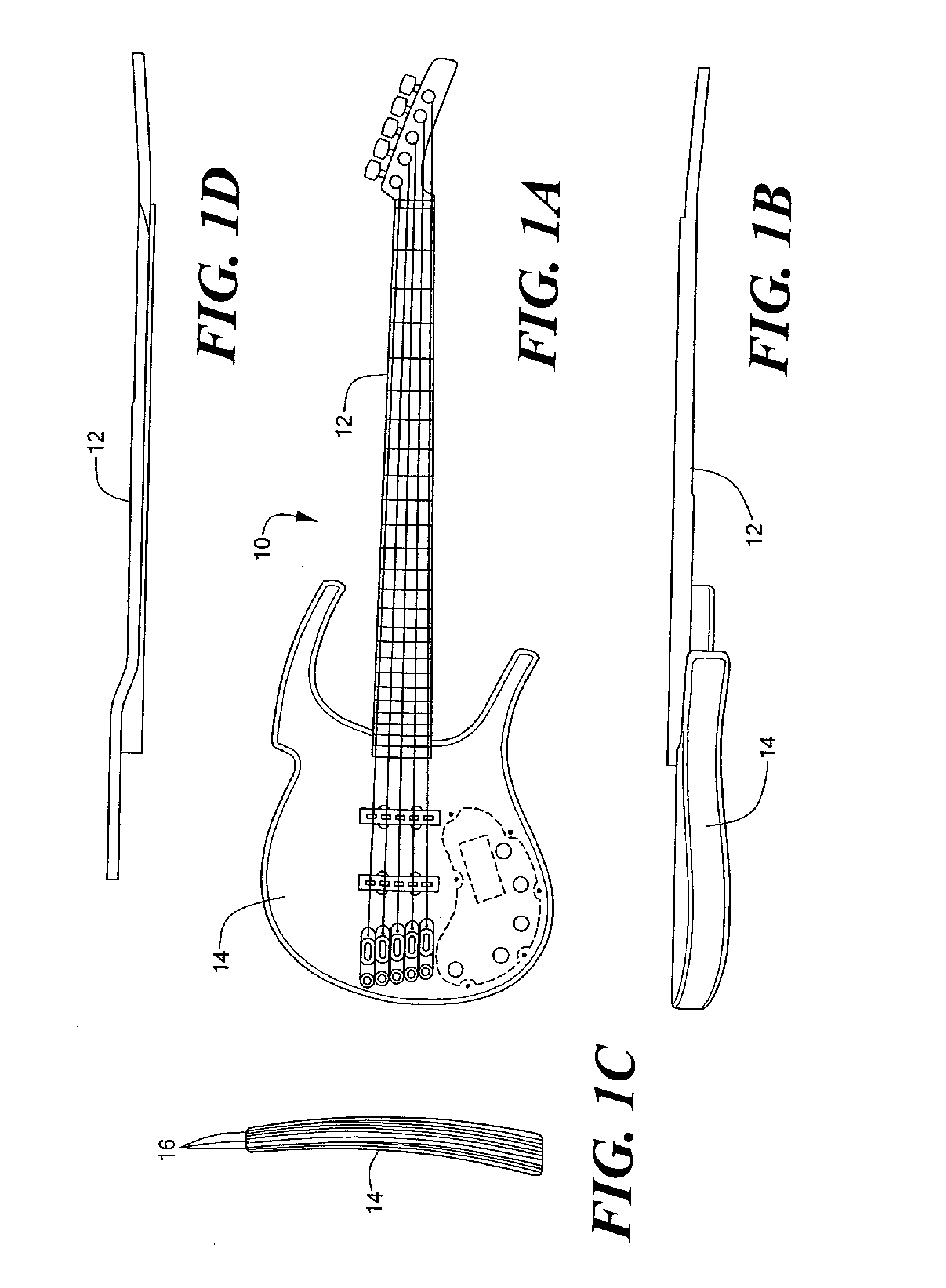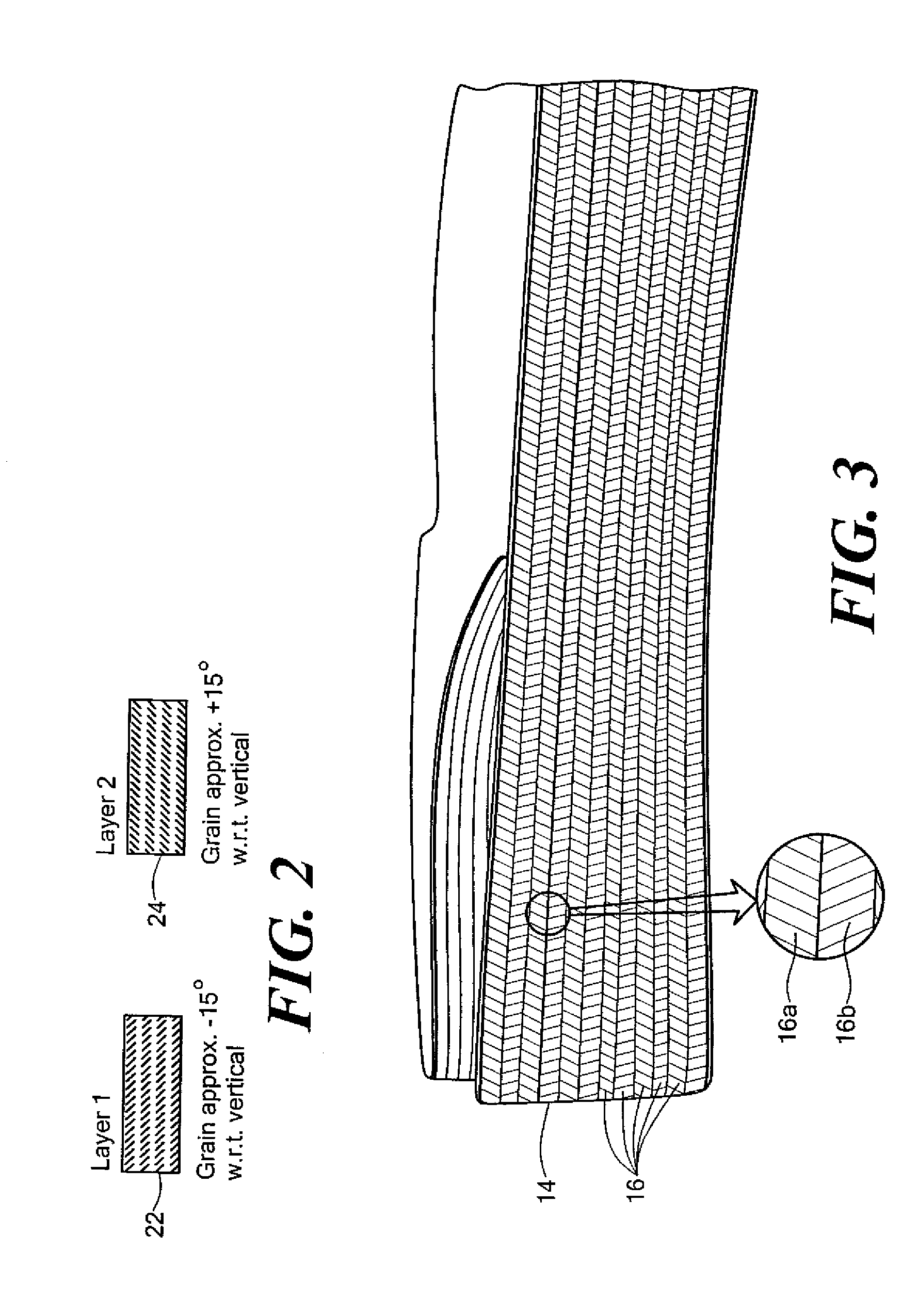Molded Laminate for Musical Instrument and Method of Manufacturing Molded Laminate Musical Instrument
a musical instrument and molded laminate technology, applied in the field of molding laminate for musical instruments and the method of manufacturing molded laminate musical instruments, can solve the problems of plywood instruments producing inferior sound, and achieve the effects of improving strength, good musical sound, and being resistant to splitting and checking
- Summary
- Abstract
- Description
- Claims
- Application Information
AI Technical Summary
Benefits of technology
Problems solved by technology
Method used
Image
Examples
Embodiment Construction
[0029]The present invention relates to a musical instrument, such as an electric or bass guitar made of wood layers bonded with an appropriate resin in a mold to form a lamination. A bass guitar 10 is illustrated in FIGS. 1A-1E. The neck 12 of the guitar is illustrated separately from the body 14 in FIG. 1D. The wood layers 16 are laminated together with the grain orientation between adjacent layers crossing at an angle less than 90. Preferably, the crossing angle is between 5° and 45° and more preferably between 10° and 15°. For example, FIG. 2 illustrates schematically two layers, one layer 22 with its grain orientation at −15° with respect to vertical and the other layer 24 with its grain orientation at +15° with respect to vertical, resulting in a crossing angle of 30°. FIG. 3 shows a side view of the body 14 with an expanded portion further illustrating the different grain orientations of adjacent layers 16a and 16b. Wood can be considered a unidirectional material, because mos...
PUM
 Login to View More
Login to View More Abstract
Description
Claims
Application Information
 Login to View More
Login to View More - R&D
- Intellectual Property
- Life Sciences
- Materials
- Tech Scout
- Unparalleled Data Quality
- Higher Quality Content
- 60% Fewer Hallucinations
Browse by: Latest US Patents, China's latest patents, Technical Efficacy Thesaurus, Application Domain, Technology Topic, Popular Technical Reports.
© 2025 PatSnap. All rights reserved.Legal|Privacy policy|Modern Slavery Act Transparency Statement|Sitemap|About US| Contact US: help@patsnap.com



